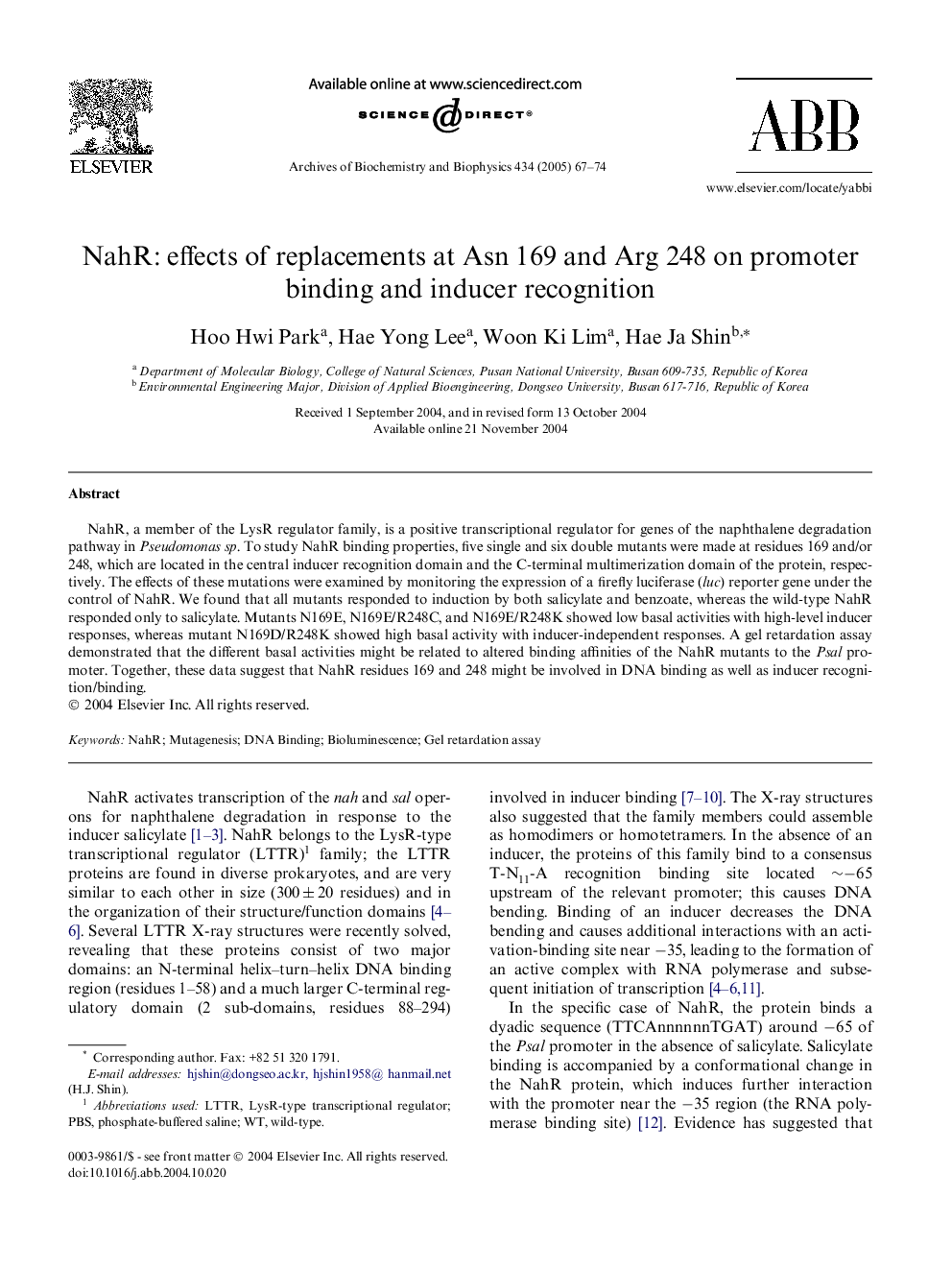| Article ID | Journal | Published Year | Pages | File Type |
|---|---|---|---|---|
| 9882354 | Archives of Biochemistry and Biophysics | 2005 | 8 Pages |
Abstract
NahR, a member of the LysR regulator family, is a positive transcriptional regulator for genes of the naphthalene degradation pathway in Pseudomonas sp. To study NahR binding properties, five single and six double mutants were made at residues 169 and/or 248, which are located in the central inducer recognition domain and the C-terminal multimerization domain of the protein, respectively. The effects of these mutations were examined by monitoring the expression of a firefly luciferase (luc) reporter gene under the control of NahR. We found that all mutants responded to induction by both salicylate and benzoate, whereas the wild-type NahR responded only to salicylate. Mutants N169E, N169E/R248C, and N169E/R248K showed low basal activities with high-level inducer responses, whereas mutant N169D/R248K showed high basal activity with inducer-independent responses. A gel retardation assay demonstrated that the different basal activities might be related to altered binding affinities of the NahR mutants to the Psal promoter. Together, these data suggest that NahR residues 169 and 248 might be involved in DNA binding as well as inducer recognition/binding.
Related Topics
Life Sciences
Biochemistry, Genetics and Molecular Biology
Biochemistry
Authors
Hoo Hwi Park, Hae Yong Lee, Woon Ki Lim, Hae Ja Shin,
